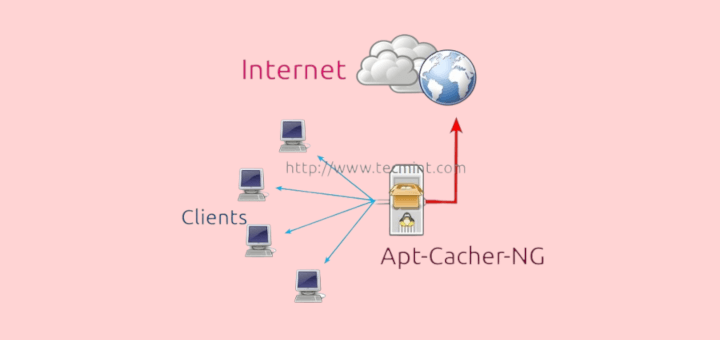A little too early, not too late.
Here, we already have a guided installation procedure on the next iteration of the world’s most popular free operating system — Ubuntu 16.04 LTS.
Canonical currently released the first beta images of Ubuntu 16.04; however, there’s no standard Unity flavor at this time and sadly, we won’t be seeing it until the 24th of March – which is the release date for beta 2 — and we should see stable builds emerging in by April 21st — followed by subsequent release candidates.
If you’re worried on how this guide will work with the first point release, worry no more as the installation procedure hasn’t changed so much from the previous releases so if you are familiar with the installation of previously released Ubuntu versions, then you shouldn’t find it too hard breezing through with this one.
Ubuntu 16.04 Xenial Xerus is now official and you can download either the 32bit or 64bit ISO images from here beforehand.
Once you’ve done that, you may now continue with the installation procedure which is absolutely straight forward; however, if you do run into problems, you can always leave a comment down below.
We also covered on how you can dual boot Ubuntu 16.04 with your current windows 10 or 8 system even though we have a previous guide on that subject here – just call this an updated version.
If you’re looking for Server Edition installation, read our article: Installation of Ubuntu 16.04 Server
As you’re probably familiar with, the installation of multiple OSes in a dual/triple boot configuration requires a bit of technical expertise from your end – as you might have to go into your BIOS or UEFI (on newer systems) to do some manual configuration but that shouldn’t be too difficult.
For systems with legacy BIOS, all you’ll need to do is change the boot order and depending on your system, you might have to press the F2, F10, F12, DEL key to enter your BIOS (you might need to Google your way around that) – while on the latter i.e UEFI, you’d mostly need to disable secure boot and fast boot and enable legacy support — that is, if the OS you’re trying to install doesn’t have UEFI support baked in by default – but, such isn’t the case of Ubuntu Xenial Xerus 16.04 LTS.
Ubuntu 16.04 LTS comes with UEFI support and it should install just fine on your PC – be it in a dual boot fashion or a single install.
As usual, pre-requisites, we must get.
Ubuntu is currently only available as an alpha install and you can proceed and download the most recent daily build image from here.
We’d assume you’ve downloaded the latest stable build from the official Ubuntu mirrors as provided in the links above.
Once, you have your ISO image ready, you may now proceed to creating a bootable disk with Rufus, or universal USB installer. You’d mostly want to go with the former as it’s as straight forward as (making an installable USB) can get – moving forward, get your PC set (plug it in), make sure you’re connected to the internet and you’re good to go.
Note: Given the time at which this article was originally published, the standard Ubuntu flavor is only available in alpha; however, we’ll be update this guide (if needed) once the beta 2 image is available for download and the stable release too.
At this point, we’ve updated the article as promised so you may proceed with full confidence in the procedure.
The curated list of features to be expected with the final build of Ubuntu include:
- First Ubuntu LTS to ship Systemd as the default service manager.
- Mir display server.
- Ubuntu 16.04 will ship in two variants, one with Unity 7 and another with Unity 8. With the latter expected to become standard after the release of 16.10.
- Unity launcher position change (to whatever side of the screen you want to place it).
- The server filesystem ZFS will also be implemented in the next LTS release.
- Linux kernel 4.4 will ship with 16.04 LTS.
- Considering it being an LTS release, you’ll also get 5 years ongoing software support.
- Gnome software center to replace Ubuntu’s archaic software center experience.
- The Ubuntu devs
also hope to implement Snappyhave implemented Snappy with Unity 7 which is the GUI of Xenial Xerus.however, it’s unlikely that it will be ready be the time Xenial Xerus will be making its way to the market by April. - Firmware updates via the Gnome software center is also a possibility.
After being severely bashed by privacy advocates, Ubuntu 16.04 LTS will finally turned off by default, the controversial online search (that gathers search results from the likes of Wikipedia and Amazon when you launch the dash to search for something locally stored on your PC).It’s now turned off by default.

Once we have all that cleared up, you may now proceed.
Ubuntu 16.04 Installation Guide
1. First off, plug in your USB drive into the intended install PC after which you’ll power the said system up and boot from USB disk (provided you’ve done the needed BIOS or UEFI configuration as mentioned above).
And you are greeted with what may seem a familiar screen – depending on how much time you’ve had with Ubuntu and derivatives in the past. Well, you want to proceed by clicking the install Ubuntu button but if you’d rather give the system a spin first, then go ahead and select the first option (try Ubuntu).
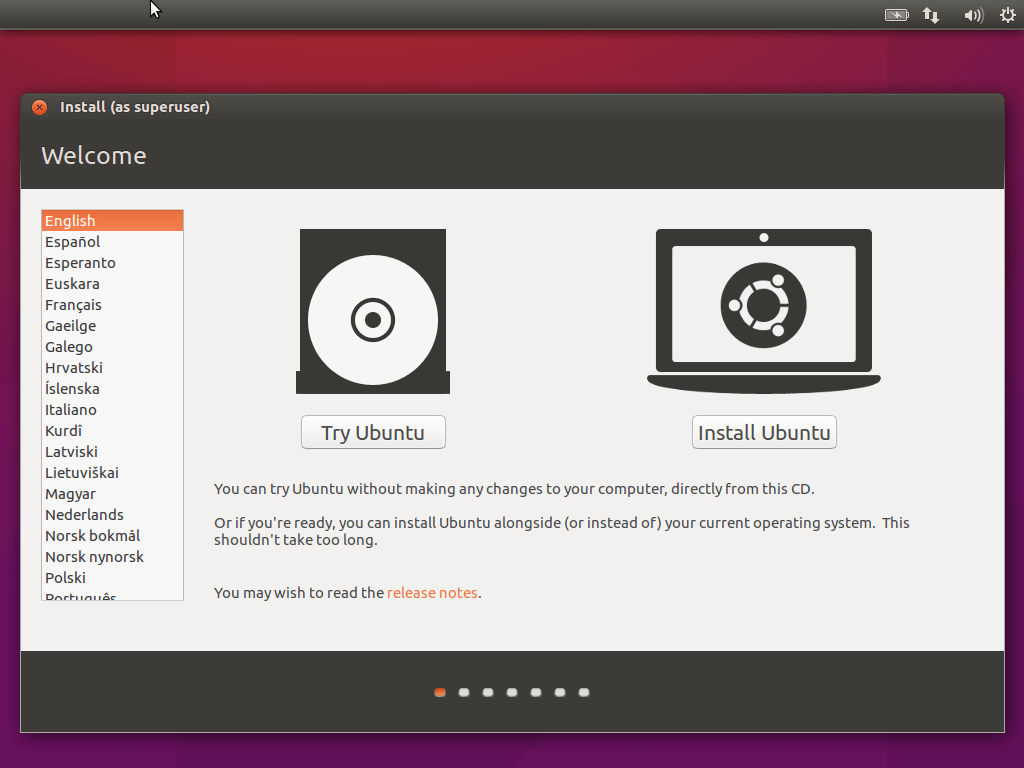
When you now decide to proceed with the installation, you’ll get a dissimilar welcome screen – thereafter, everything is pretty much the same if you decide to NOT try the OS first.
As you can see on the left bar of both screenshots, you’ll have to choose your language as needed; and this, of course, will be the default (once installed) throughout the system.
2. Next up is your preparation screen and you should tick both options before you continue so you won’t have to go through the hassle of installing updates and codecs after you might have completed the installation. If you are without an internet connection though, the first option will be greyed out, but then you can tick the second and continue your installation.
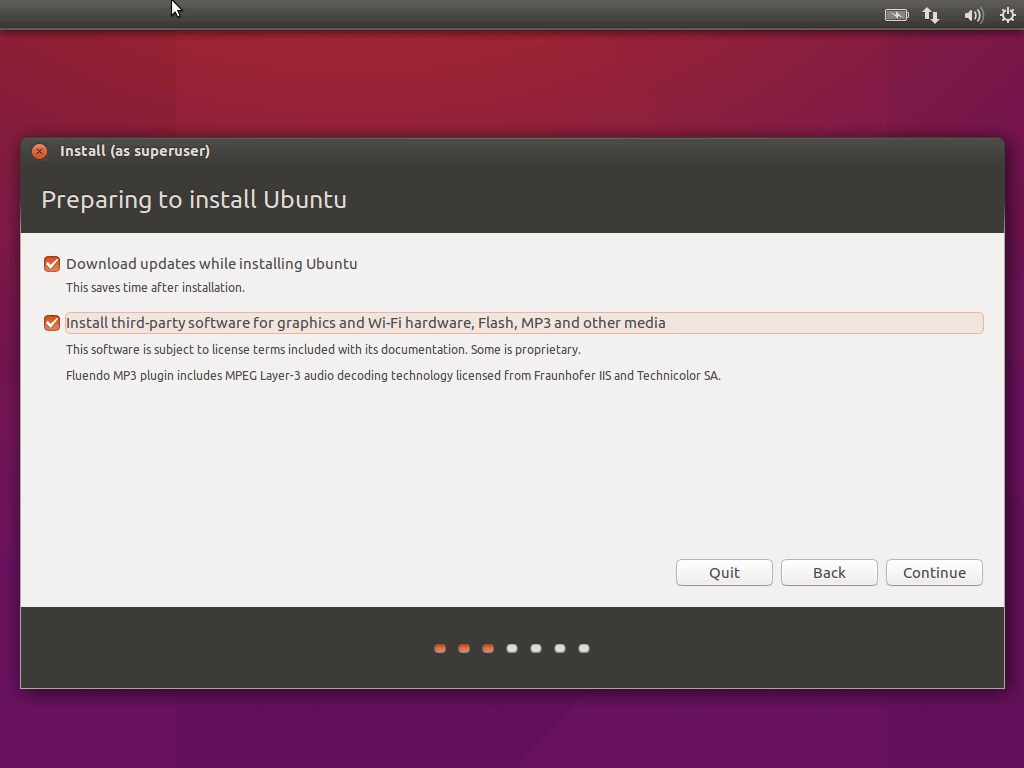
3. At this point, you have to choose your installation type and the first screenshot is an automated process, even if you have an operating system already installed, the installer will auto-detect it and allow you partition the drive in the next screen with simple sliders that will auto-allocate your assigned space for the Ubuntu partition.
Choose an option as needed and proceed – you may also decide to encrypt your disk or use (LVM) logical volume manager with your Ubuntu installation – but we advise that you select those ONLY if you know what you’re doing.
If you’d prefer to manually partition your disk though for Ubuntu 16.04 dual boot with Windows, go to the end of the article at section Ubuntu 16.04 Manual Partitioning and come back to #5 to continue with the installation.
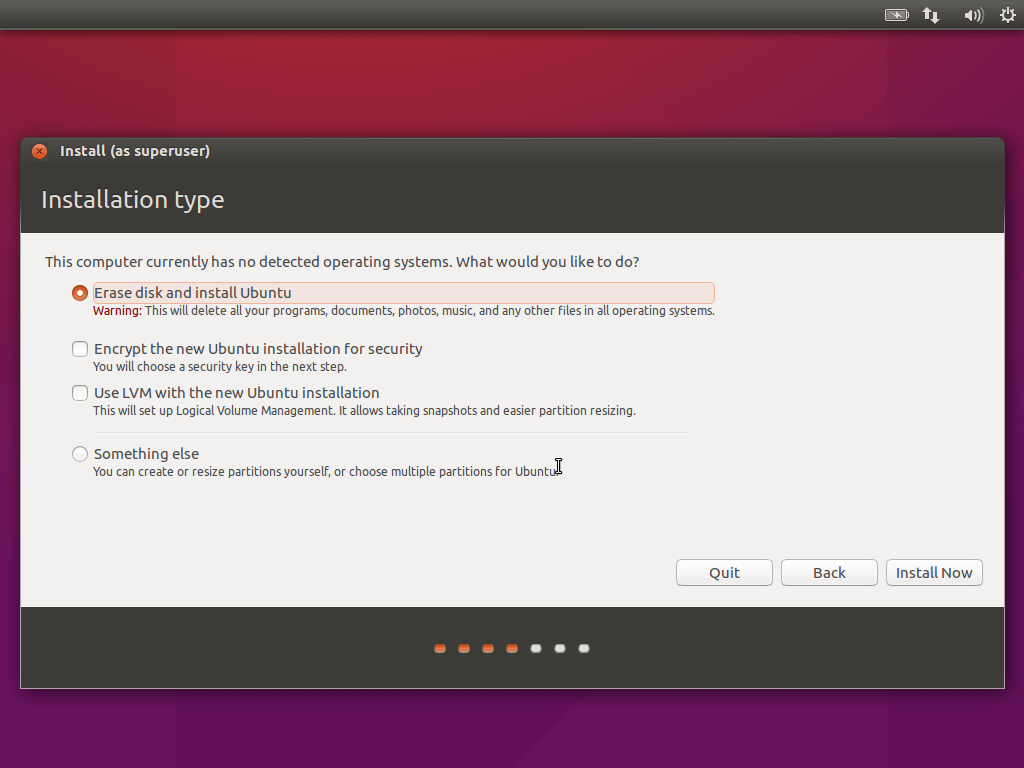
4. Prompt to confirm that you want the changes to be made to your internal drive; click continue to move onto the next screen.
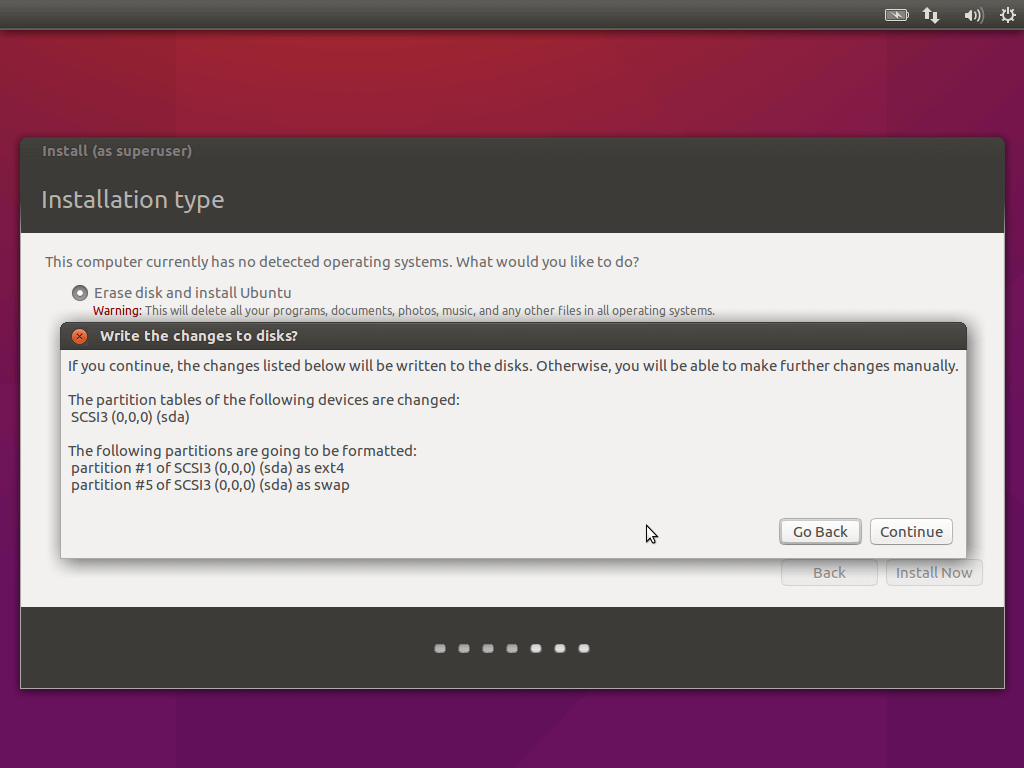
5. This is where you select your current location; hint: the setup auto-detects your location if you’re connected to the internet.
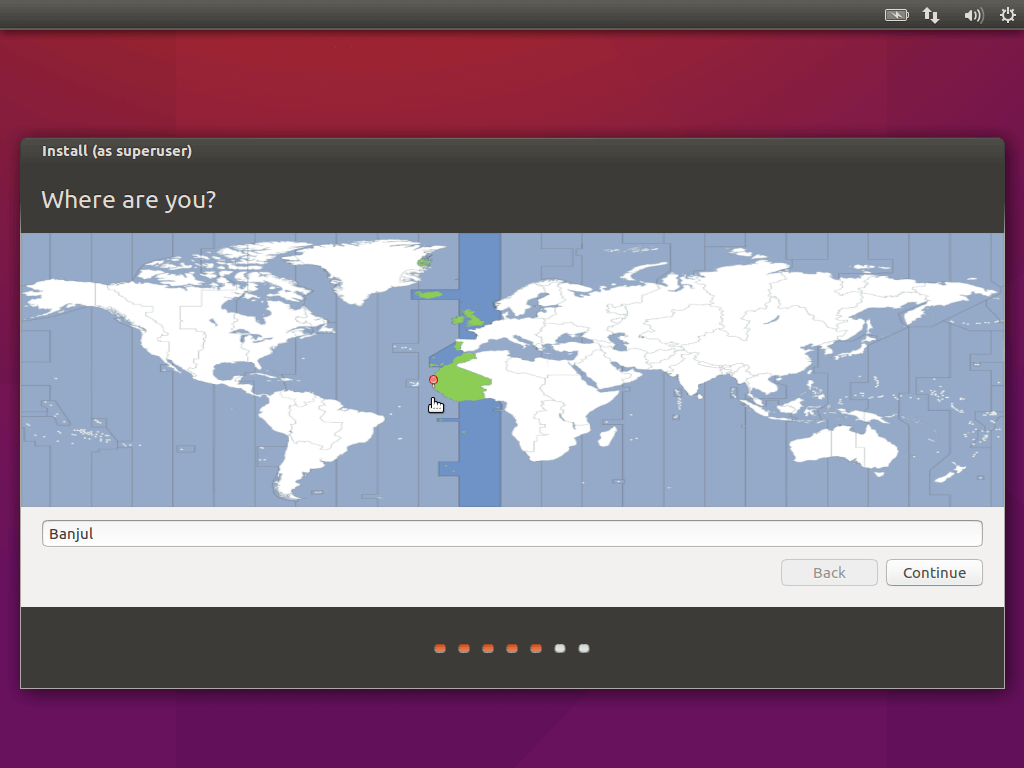
6. Configure as needed — depending on your type of keyboard and default input language.
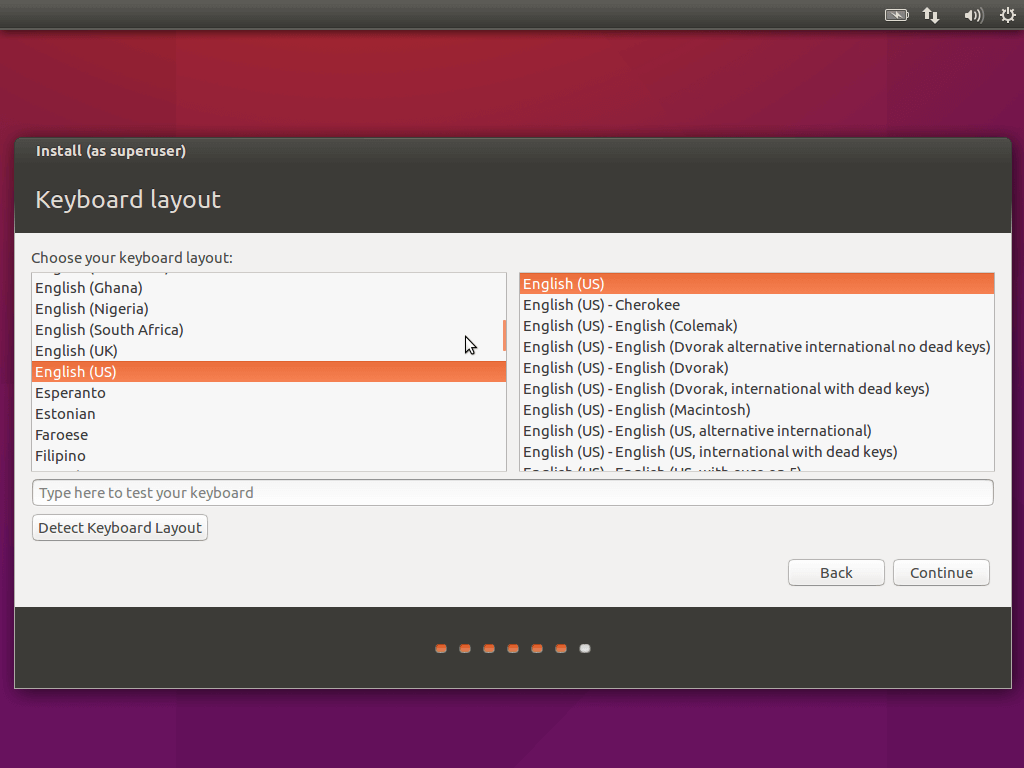
7. This is where you enter your user details in the right order – that is, descending; after which you can click continue to proceed to the next screen.
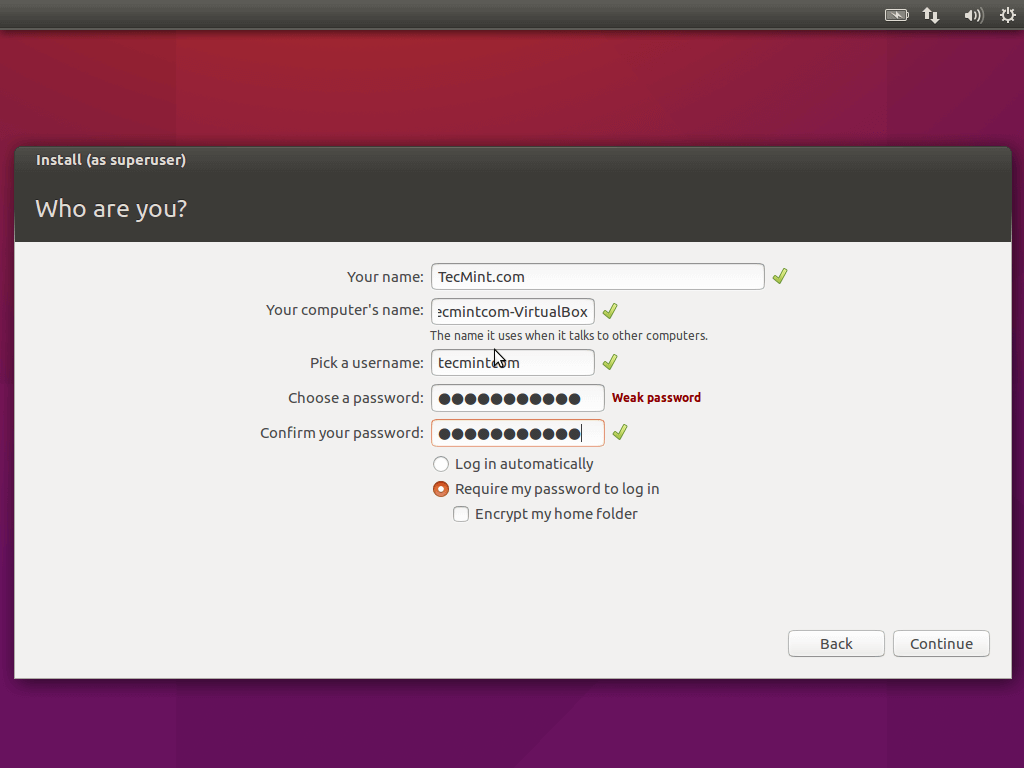
8. Right up next, is the beginning of installation which (depending on your PC hardware), can take a long or short time.
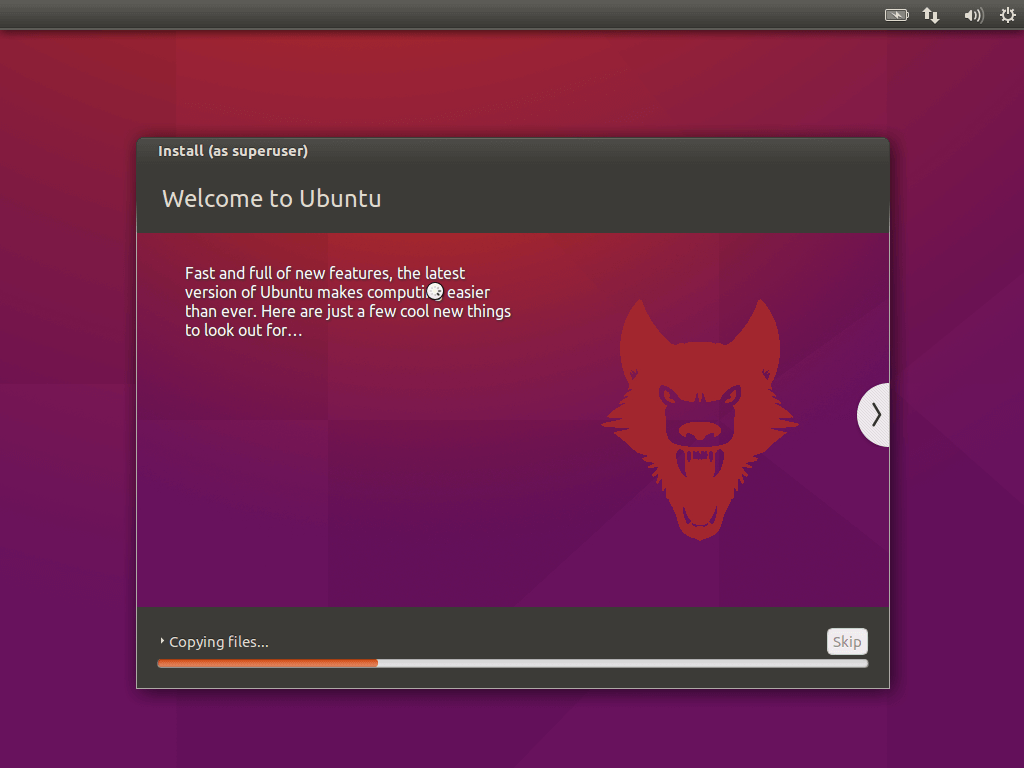
9. At this point, the installation is complete and now, you may restart your PC.
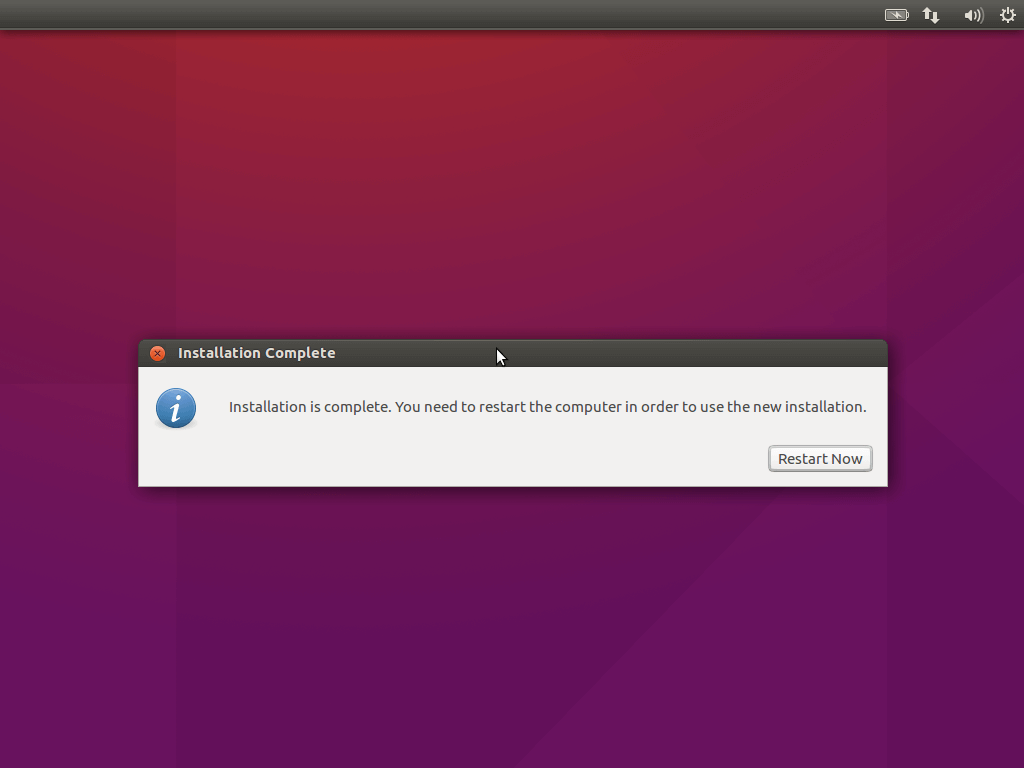
10. Once you’ve restarted, you are now greeted with the login screen where you input your password (or in the case of multiple users select your name) and press enter to continue to the Unity7/8 DE.
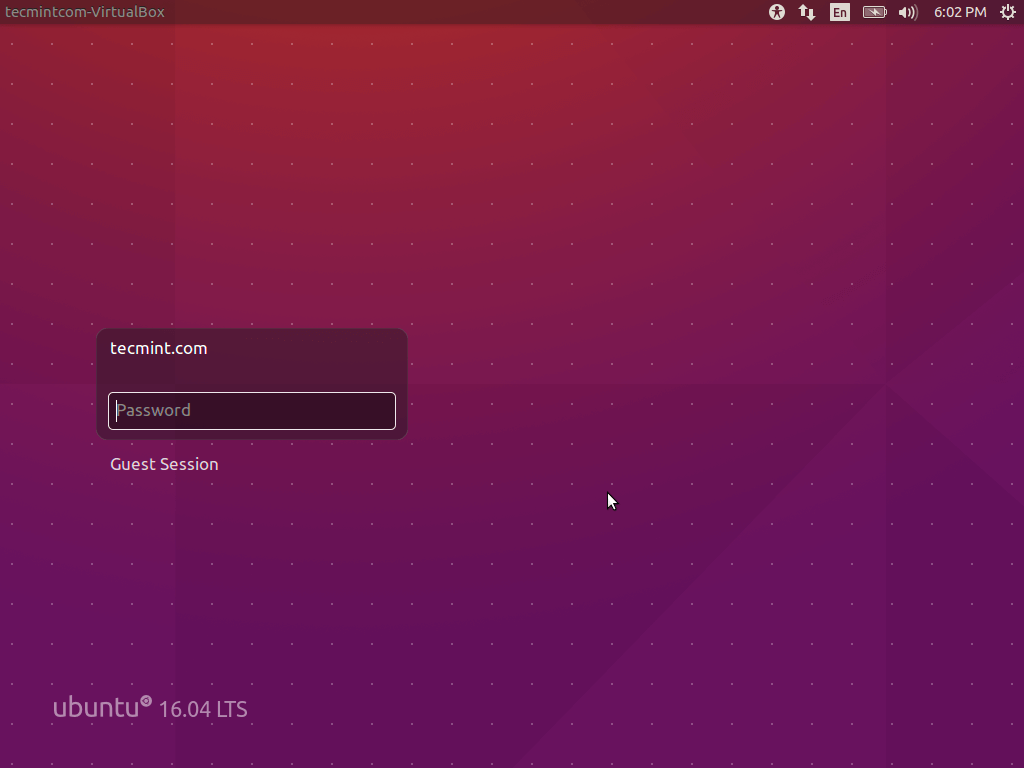
11. Ubuntu 16.04 desktop.

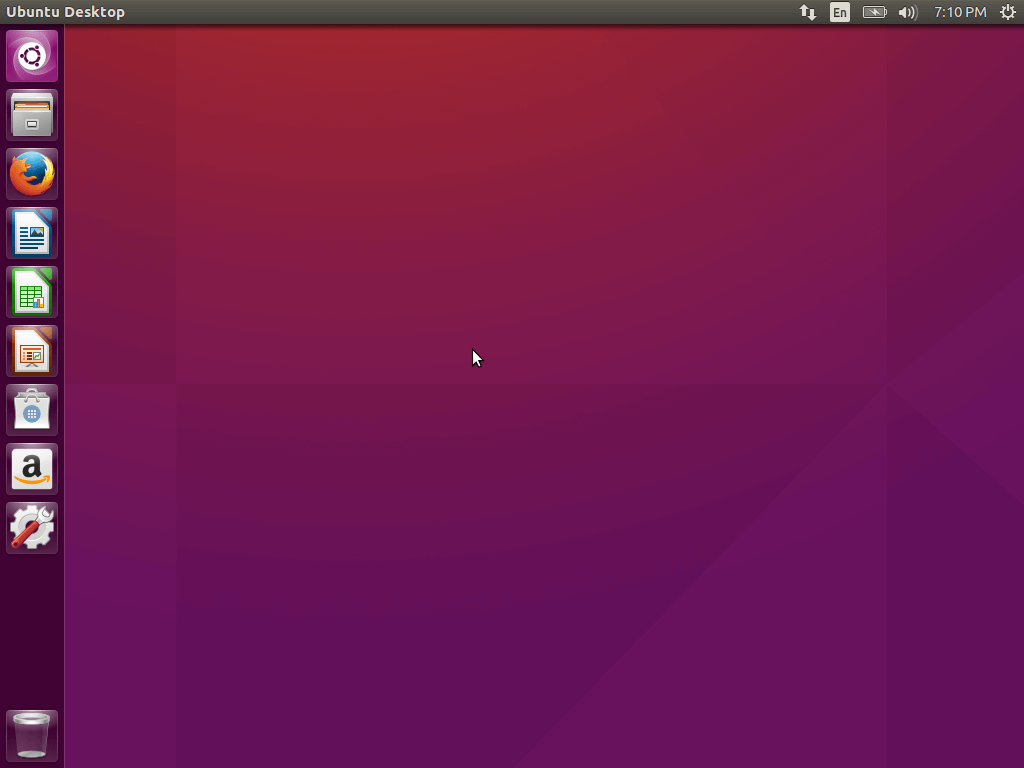
Update Ubuntu 16.04
12. A good practice for any Linux user is to update the system once it’s done installing – hence, a brief how-to-update walkthrough.
First off, go on to the Unity dash (which is the square button on the top left corner in the image above and below) and search for “software and updates”, open it and select the “other sources” tab, tick both options (mind you, you’ll be prompted to enter your root password) the software cache is updated and you’re good to go.
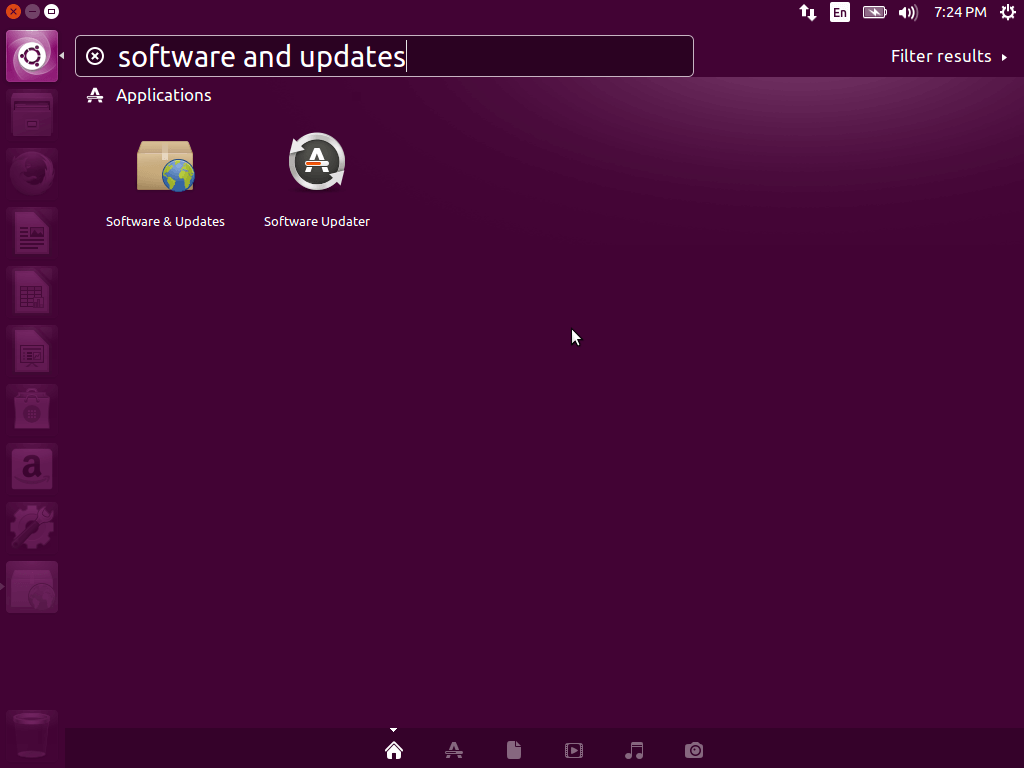
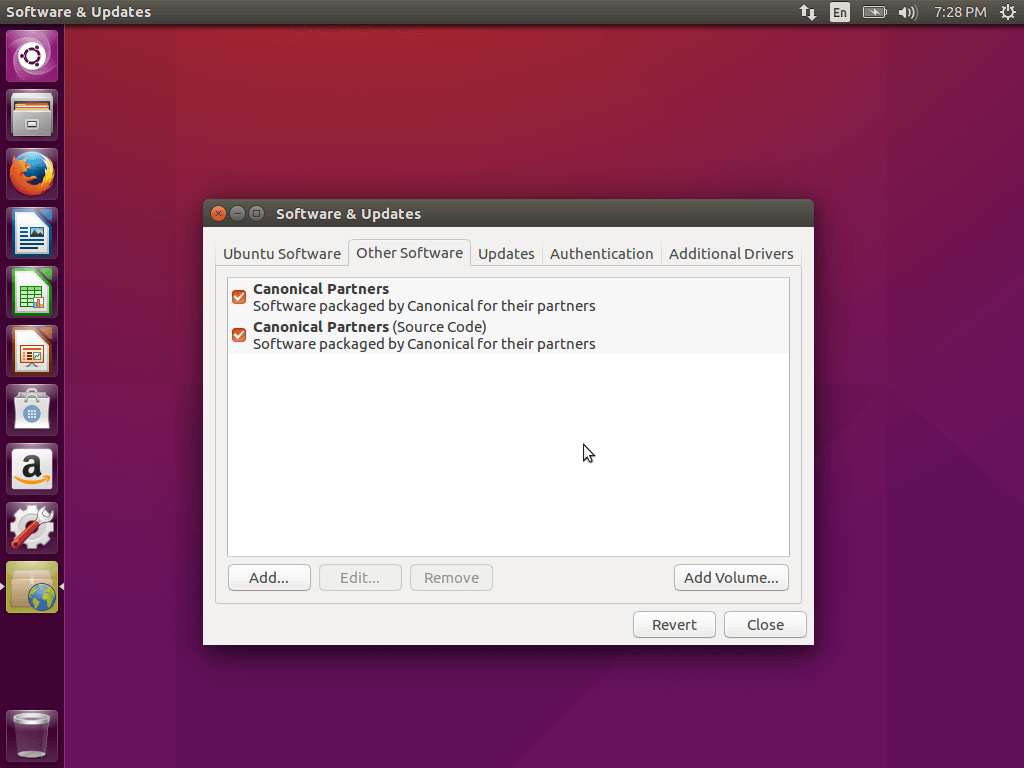
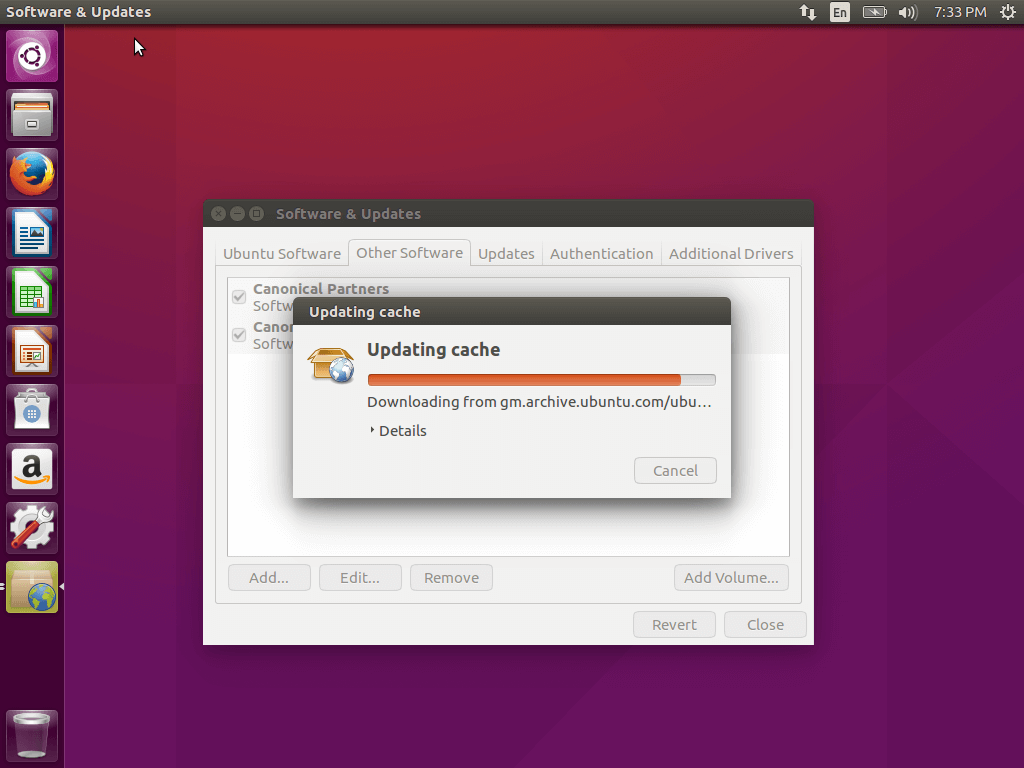
Once you have that setup, you may not go to the same dash and type in “terminal” and enter the follow-up commands (consecutively) to update your Ubuntu installation.
$ sudo apt-get update $ sudo apt-get upgrade
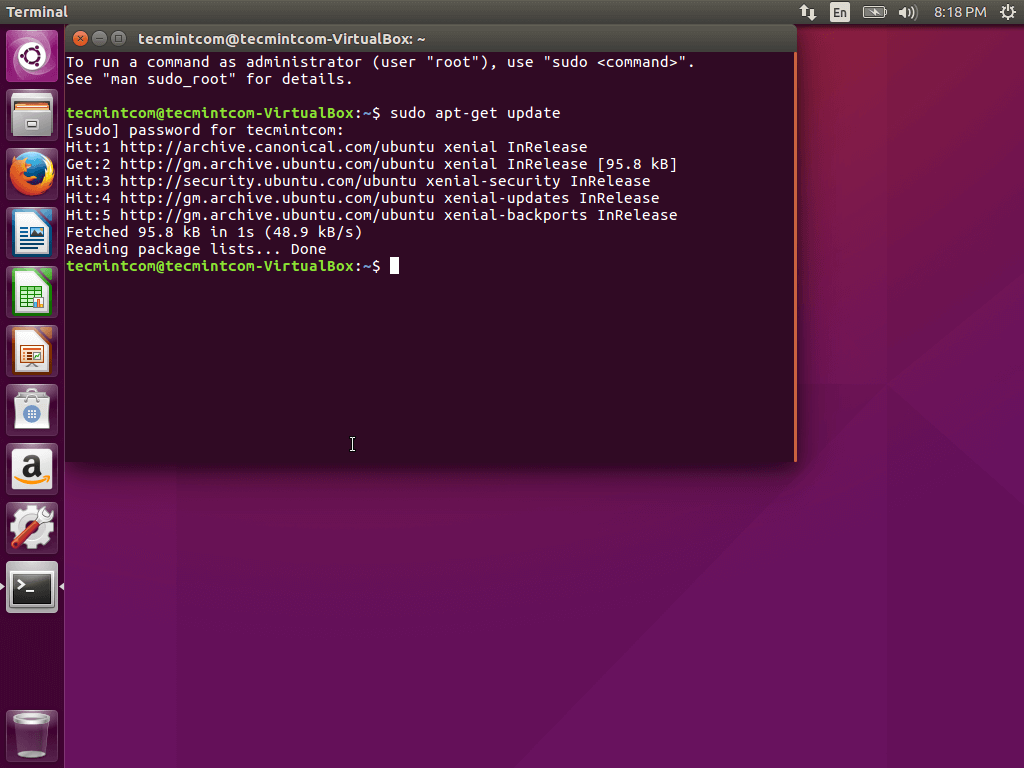
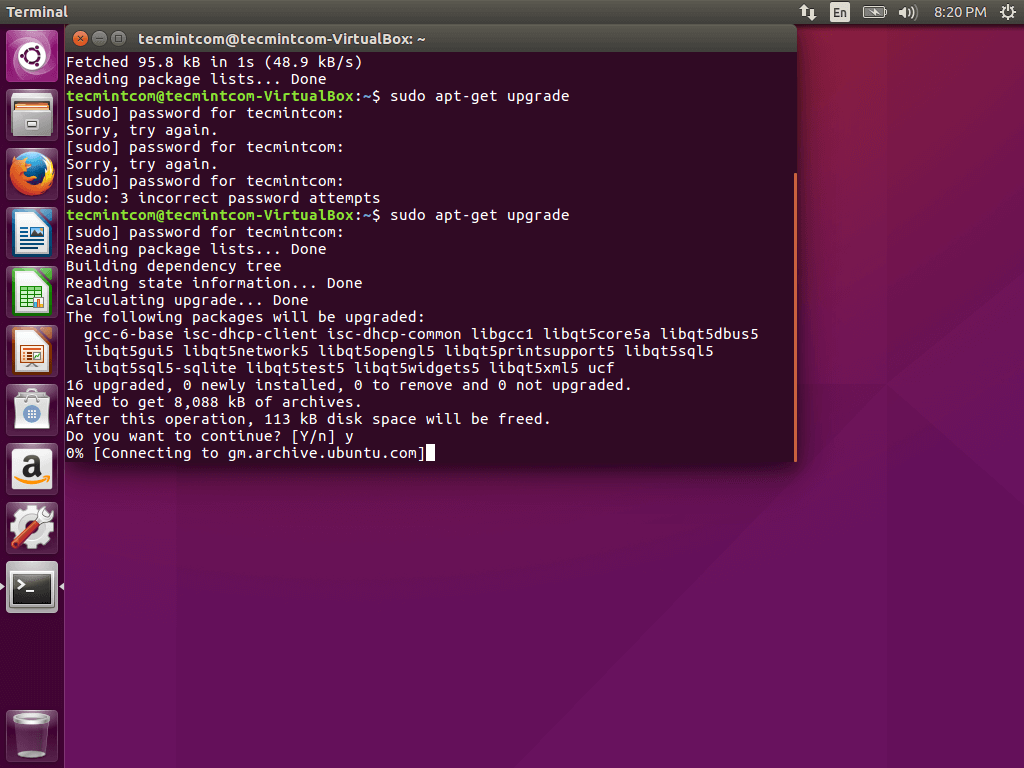
13. The new gnome app store in Ubuntu is perhaps the most prominent feature of the OS and as of this writing, it doesn’t exactly seem to function as expected, however, considering the alpha status of the image I’m using, such things are expected and most issues and whatnot should be ironed out before the “stable” is ready for prime-time in April.
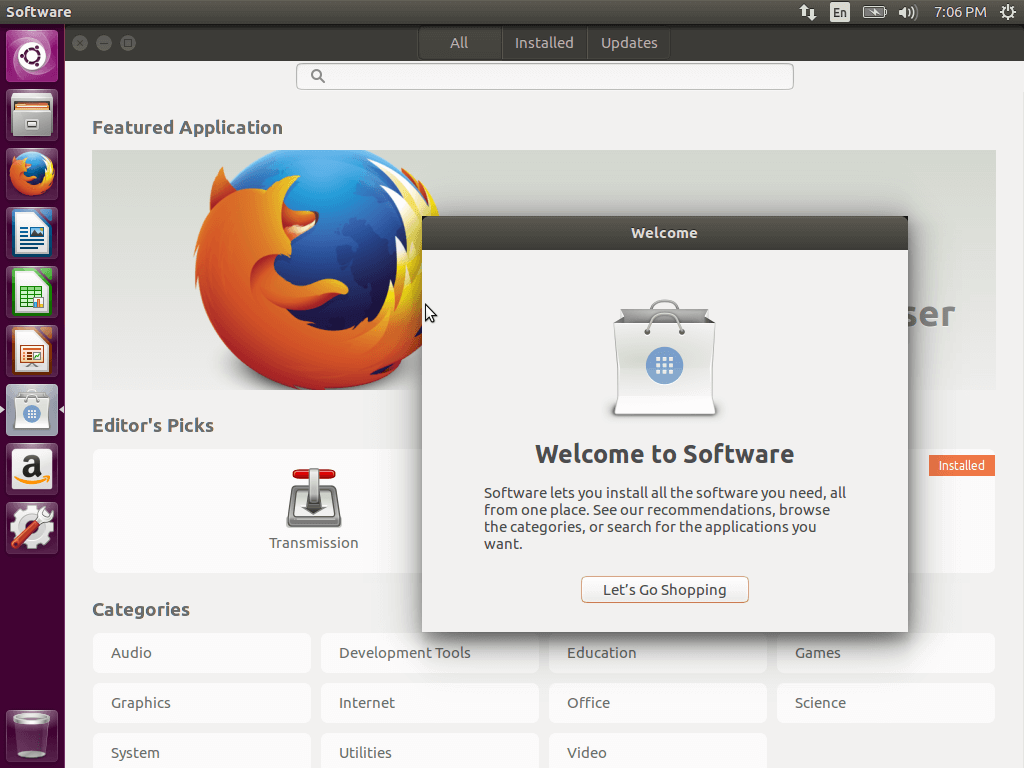
Ubuntu 16.04 Manual Partitioning
Manual partitioning — #3 for those of you that will rather take this route.
3a. Instead of “Erase disk and install Ubuntu”, go ahead and choose the last option “something else”.
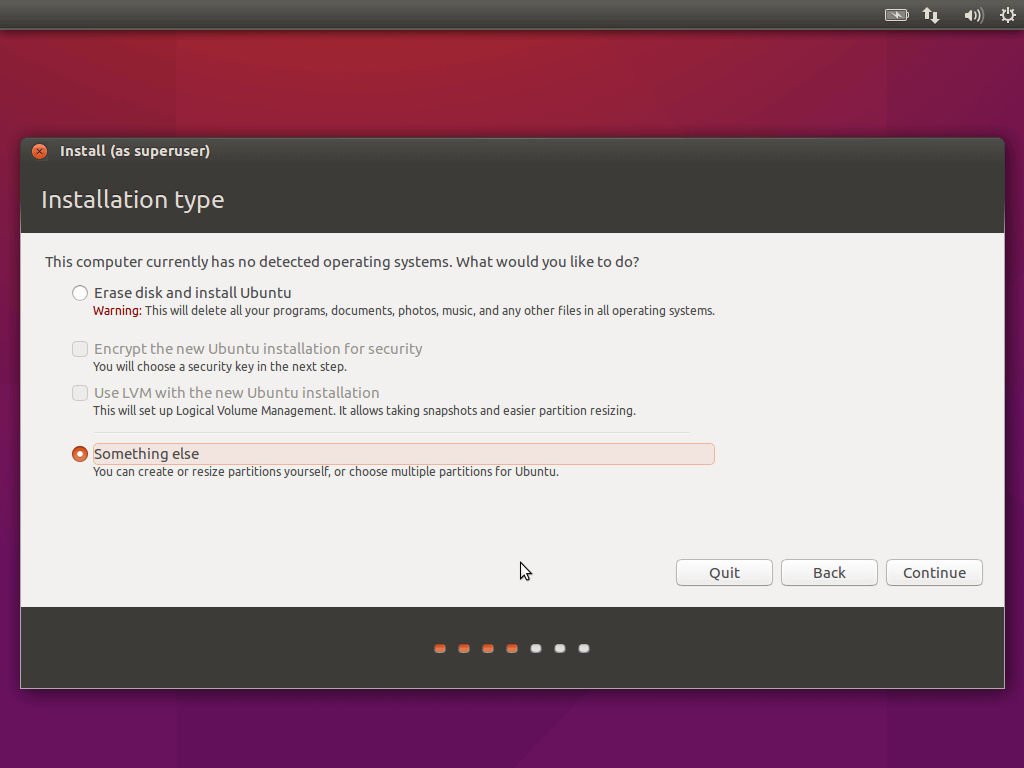
3b. Depending on the number of physical drives you have hooked up in your PC, they can be labelled as dev/sda, dev/sdb, dev/sdc and so on. In my case, however, I’ve only got one HD to install Ubuntu in – dev/sda.
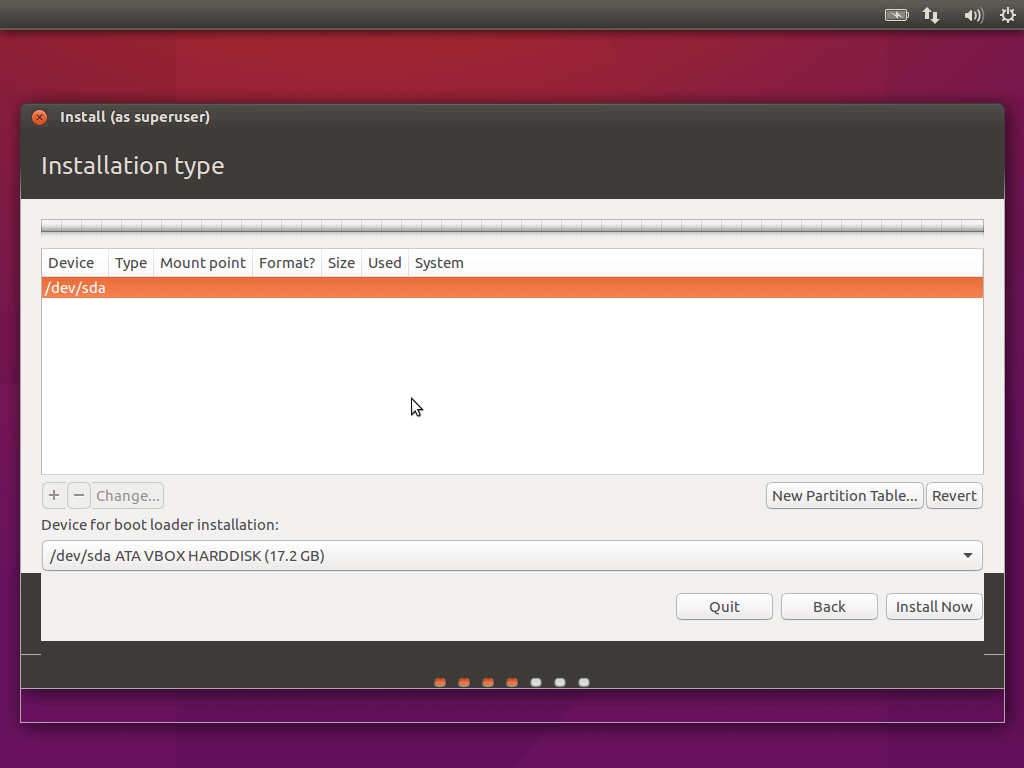
3c. Now you may go on and create a partition table.
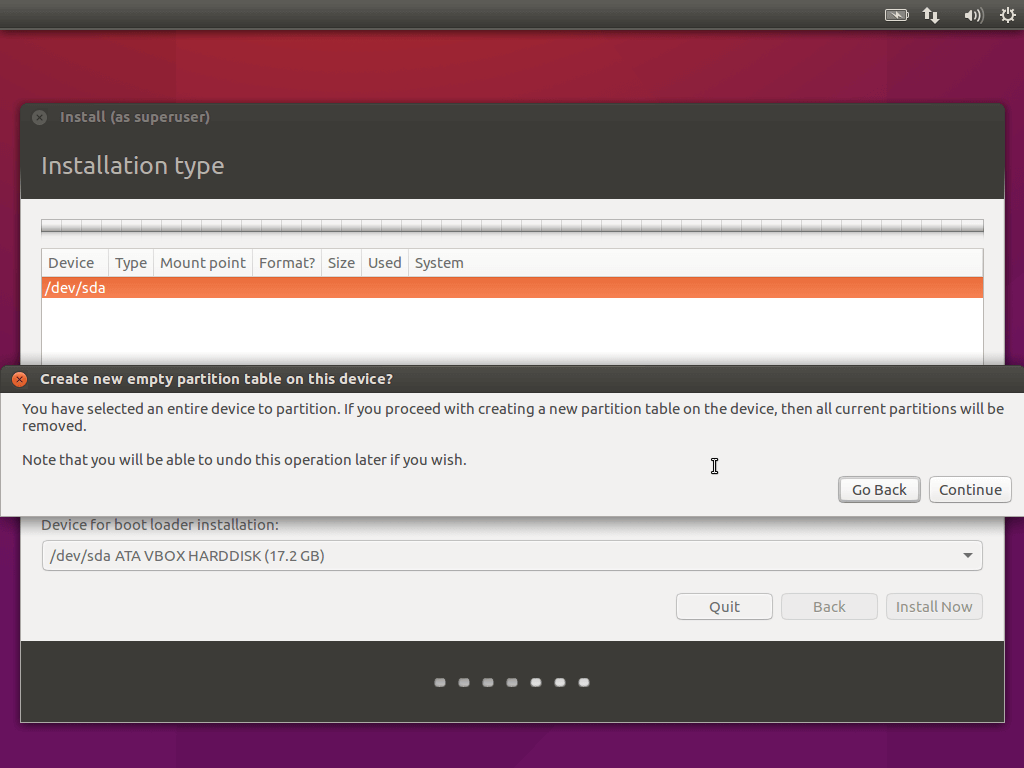
3d. After you might have done that, you want to proceed and create the partitions you’ll need for Ubuntu (by clicking the + button in the lower area of the partition screen); if you’re on a low specced PC with say, 2GB of RAM, it’s advisable to create a minimum swap partition (equivalent of virtual memory on Windows) that is twice the size of the physical memory. In my case, I have 2GB of RAM so I created a swap partition of 4GB.
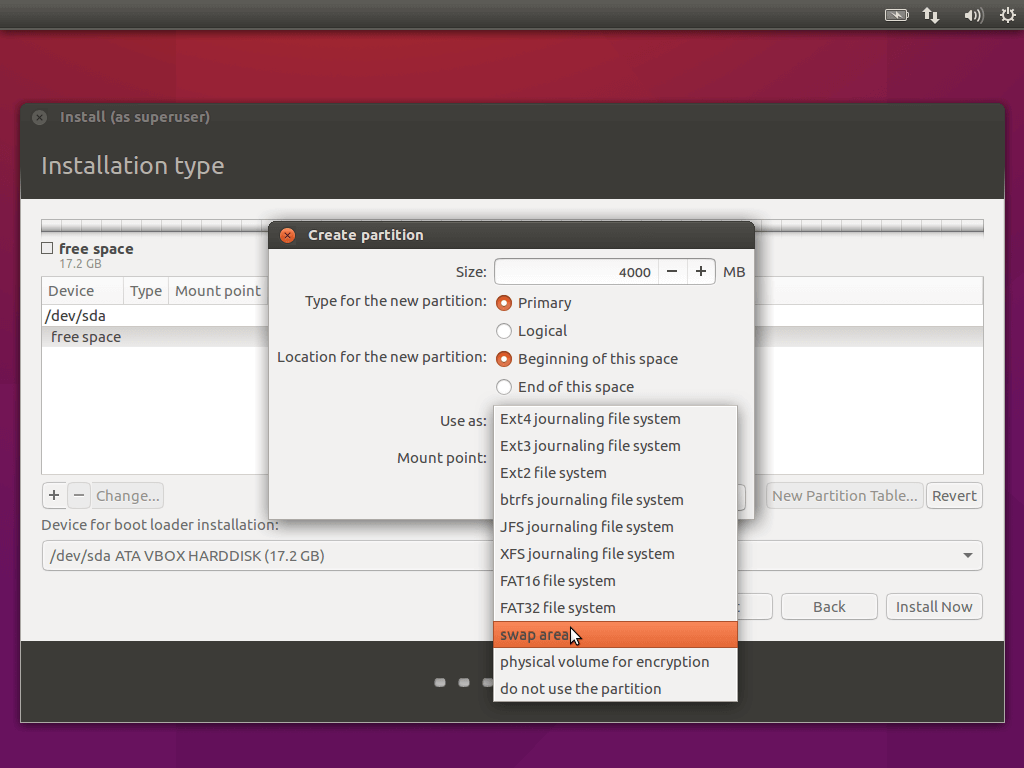
In the case where your PC has 8GB (or more) of physical memory, it is rather irrelevant to create a swap space of twice that amount (cause you’ll never get to use even half of it) so it only makes sense to create something not too big – something like 2GB will be just okay.
3e. Once you’re done creating your swap, you can now go ahead and create a root partition with the rest of the free space available. However, if you’d prefer a separate partition for your home folder, you can as well create it, but you’re mostly fine with a single partition.
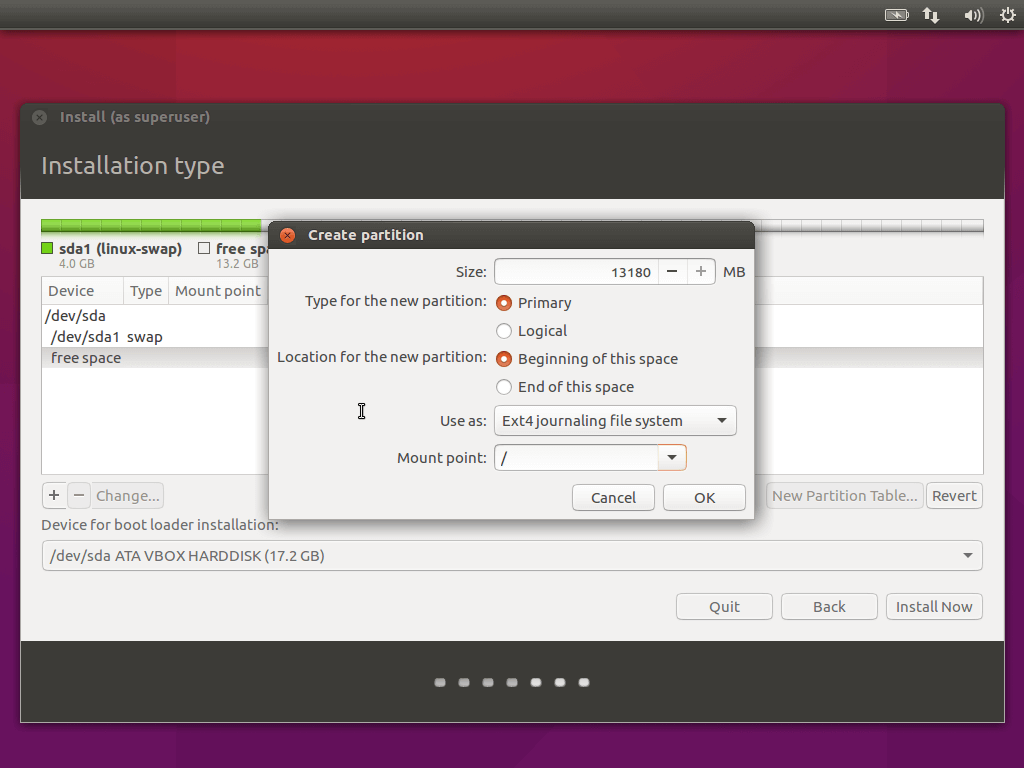
3f. From the screenshot below, my swap is labelled “/dev/sda1 swap” and my root partition is “/dev/sda2 /”.
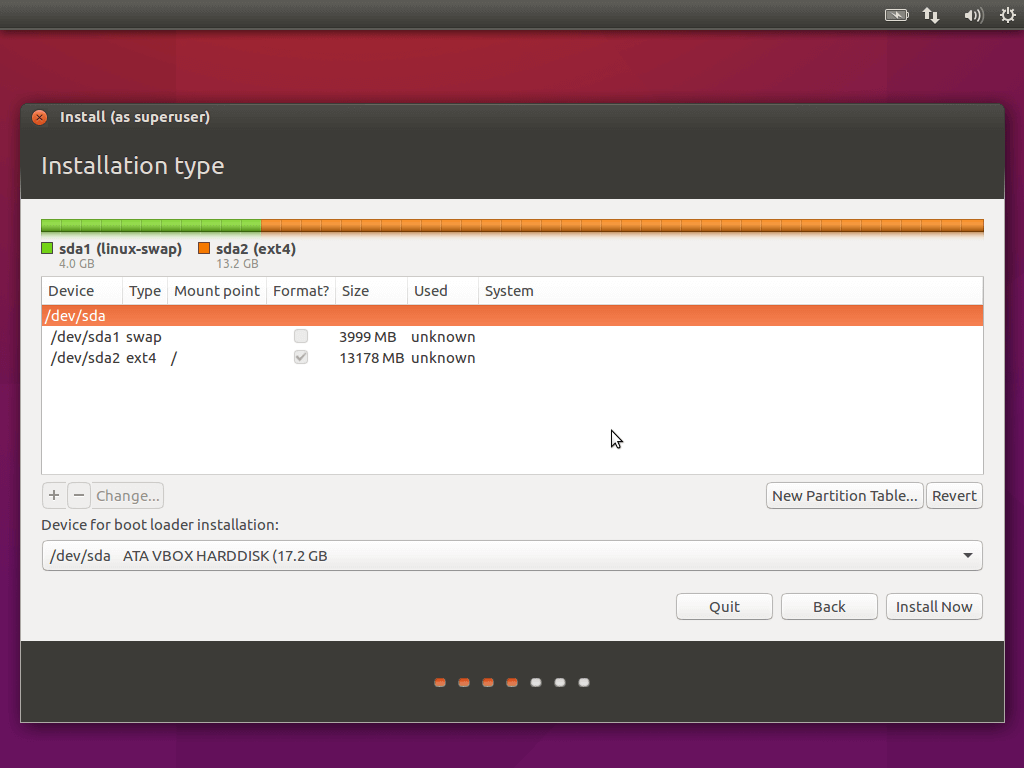
3g. lastly, confirm that you want to write the changes to disk and go back to #5 to continue your installation.
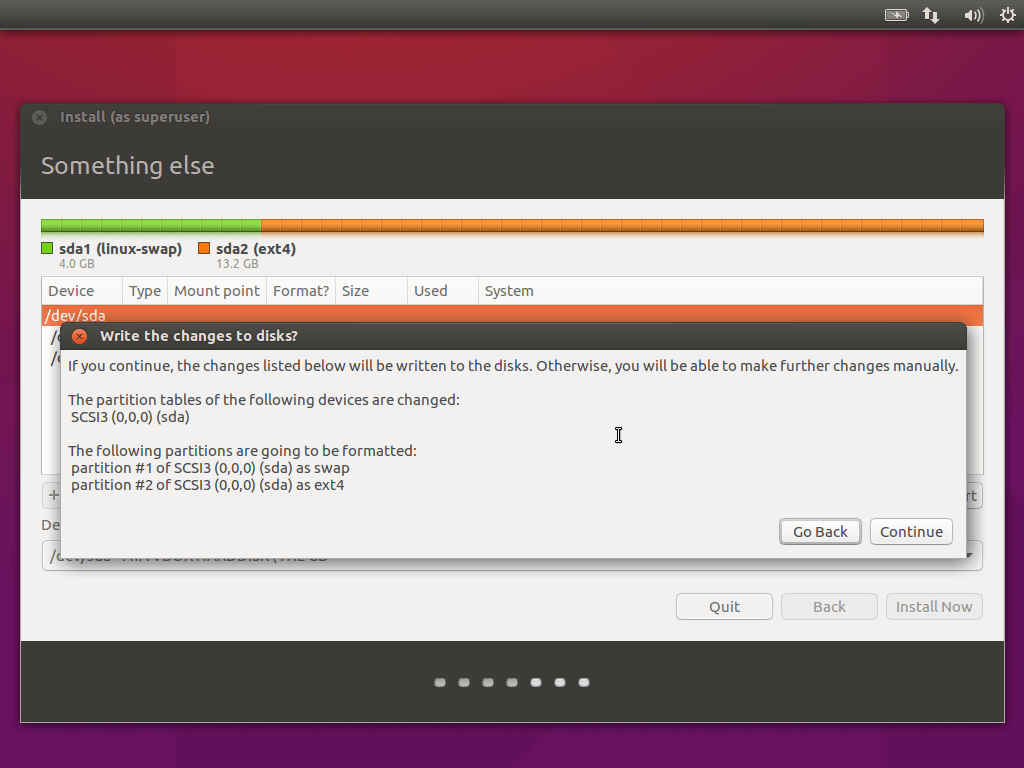
If you encounter any difficulty while installing, let us know in the comments below and we’ll respond as quickly as we can.



